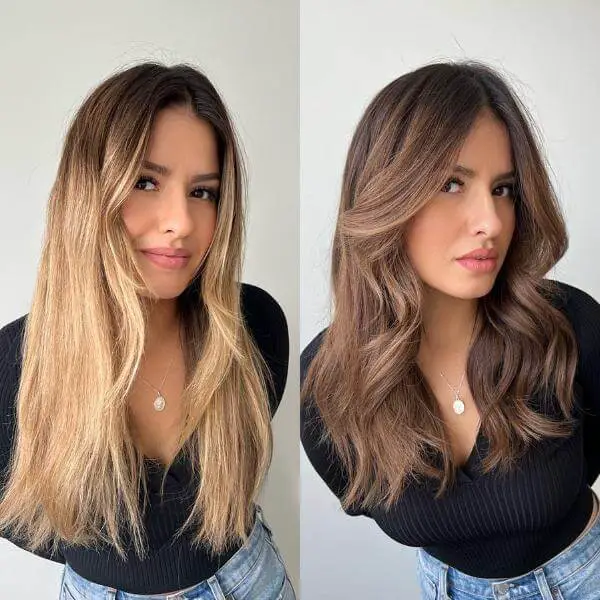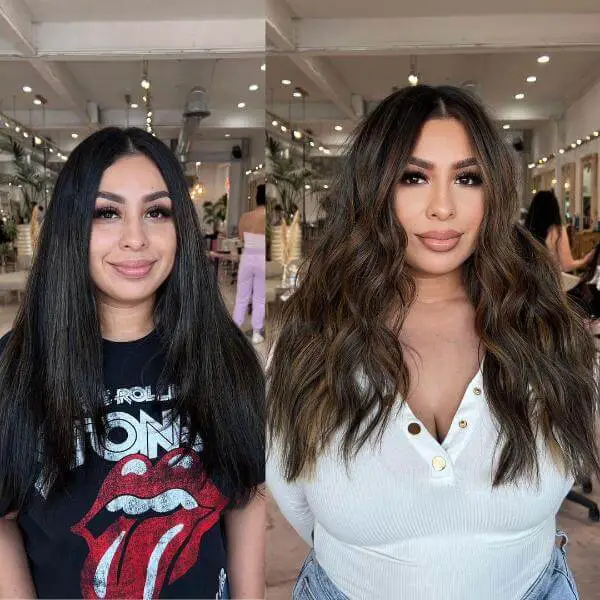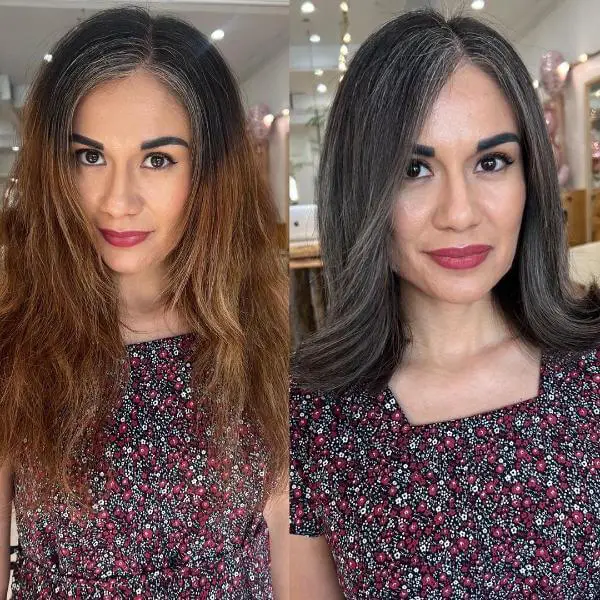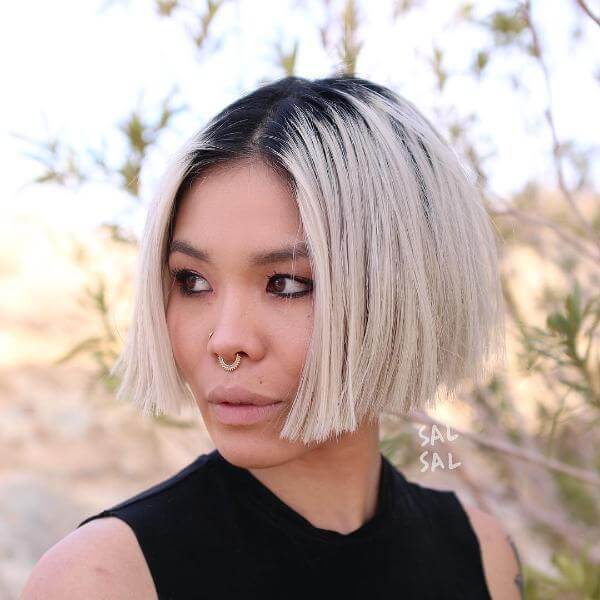
Whether you’ve been dyeing your hair for years or just tried a new color that didn’t turn out as expected, the journey back to your natural hair color can seem daunting.
However, with the right approach, you can restore your natural hue in a healthy and manageable way.
Here’s a comprehensive guide to help you navigate this process.
1. Assess the Current State of Your Hair
Before embarking on the journey back to your natural color, it’s essential to evaluate your hair’s condition. Consider the following factors:
- Current Color: Is it a lighter shade, darker shade, or a completely different hue from your natural color?
- Hair Health: Are your hair and scalp healthy, or are they damaged from previous dyeing and treatments?
- Hair Type and Texture: Different hair types and textures may require different approaches.
2. Decide on a Transition Strategy
There are several methods to return to your natural color. The best approach depends on your hair’s condition and your personal preferences.
Gradual Transition:
- Highlights and Lowlights: Adding highlights or lowlights that match your natural color can blend the dyed hair with the new growth, creating a more seamless transition.
- Balayage: This technique involves painting color onto the hair in a way that mimics natural sun-kissed highlights, which can help blend the dyed and natural colors over time.
Immediate Change:
- Color Correction: This involves a professional treatment to remove or neutralize the existing dye and re-color the hair to closely match your natural shade.
- Cutting: Opting for a shorter haircut to remove a significant portion of the dyed hair can speed up the transition process.
3. Prepare Your Hair for the Transition
Healthy hair responds better to color treatments and grows out more smoothly. Focus on improving your hair’s health with the following steps:
- Deep Conditioning: Use deep conditioning treatments regularly to strengthen and moisturize your hair.
- Avoid Heat Styling: Minimize the use of heat tools like blow dryers, curling irons, and straighteners.
- Trim Regularly: Regular trims will help prevent split ends and keep your hair looking healthy as it grows out.
4. Choose the Right Products
Using the right hair care products is crucial during the transition phase. Look for the following:
- Color-Safe Shampoo and Conditioner: These products will help maintain any remaining dye while being gentle on new growth.
- Clarifying Shampoo: Use a clarifying shampoo occasionally to remove any buildup from styling products.
- Hair Masks and Treatments: Opt for nourishing hair masks and treatments that can restore and maintain hair health.
5. Be Patient and Consistent
The process of returning to your natural color takes time. Here are some tips to help you stay on track:
- Track Your Progress: Take photos regularly to monitor the growth and transition.
- Stay Consistent with Hair Care: Stick to your hair care routine to ensure your hair remains healthy and strong.
- Embrace the Journey: Accept and enjoy the different stages your hair goes through during this process.
6. Professional Help and Maintenance
Engage with a professional stylist who can provide personalized advice and treatments. Here’s why professional help can be beneficial:
- Expertise in Color Matching: Professionals can match your natural color more accurately and provide customized treatments.
- Advanced Treatments: Access to salon-exclusive products and treatments that can facilitate the transition.
7. Natural Remedies and DIY Options
If you prefer a more natural approach, consider these options:
- Natural Color Removers: Products that use natural ingredients to strip away artificial color without harsh chemicals.
- DIY Hair Masks: Ingredients like coconut oil, honey, and avocado can nourish and strengthen your hair during the transition.
Tips for Growing Out Colored Hair
Growing out colored hair to reveal your natural hue is a process that requires patience and care. Here are some practical tips to help you navigate this transition smoothly and effectively.
1. Regular Trims
Regular trims are crucial for removing damaged ends and speeding up the transition process. Aim to trim your hair every 6-8 weeks to gradually eliminate the colored portions.
2. Embrace the Roots
Instead of hiding your roots, embrace them as part of your natural look. Root growth can add a unique, trendy touch to your hairstyle. Consider styles that highlight your natural roots or opt for hair accessories to blend the transition.
3. Blend with Highlights or Lowlights
Adding highlights or lowlights that match your natural color can help blend the dyed and natural hair. This technique creates a more seamless transition and reduces the stark contrast between the two colors.
4. Opt for a Balayage Technique
Balayage is a freehand coloring technique that creates natural-looking, sun-kissed highlights. This method can blend the colored hair with the natural growth, making the transition less noticeable.
5. Consider a New Haircut
A shorter haircut can remove a significant portion of the dyed hair, accelerating the growing-out process. Discuss with your stylist to find a cut that suits your face shape and lifestyle.
6. Use Color-Safe Hair Products
Invest in high-quality, color-safe shampoos and conditioners to maintain the health of both the dyed and natural hair. These products help prevent fading and keep your hair moisturized.
7. Avoid Heat Styling
Minimize the use of heat styling tools like straighteners, curling irons, and blow dryers. Heat can damage your hair, making it more difficult to manage during the growing-out phase. When you do use heat, apply a heat protectant spray.
8. Deep Conditioning Treatments
Regular deep conditioning treatments can keep your hair healthy and strong. Look for masks and treatments that target both colored and natural hair, providing necessary moisture and nutrients.
9. Be Gentle with Your Hair
Handle your hair with care to prevent breakage and damage. Use a wide-tooth comb or a detangling brush to gently detangle your hair, starting from the ends and working your way up.
10. Consider Temporary Solutions
If the contrast between your roots and the dyed hair is too stark, consider temporary solutions like root touch-up sprays or powders. These products can help blend your roots with the rest of your hair temporarily.
11. Maintain a Healthy Diet
A balanced diet rich in vitamins and minerals can promote healthy hair growth. Ensure you’re getting enough protein, iron, and vitamins A, C, and E, which are essential for strong and healthy hair.
12. Stay Hydrated
Drinking plenty of water is essential for overall health, including the health of your hair. Hydrated hair is less prone to breakage and dryness.
13. Protect Your Hair from Environmental Damage
Exposure to the sun, wind, and pollution can damage your hair. Wear hats or scarves to protect your hair when outdoors, and consider using products with UV protection.
14. Patience is Key
Growing out colored hair is a slow process that requires patience. Accept the different stages your hair goes through and remind yourself that the end goal is worth the wait.
15. Seek Professional Advice
Regular visits to your hairstylist can help you manage the transition effectively. A professional can provide personalized advice and treatments tailored to your hair type and needs.









